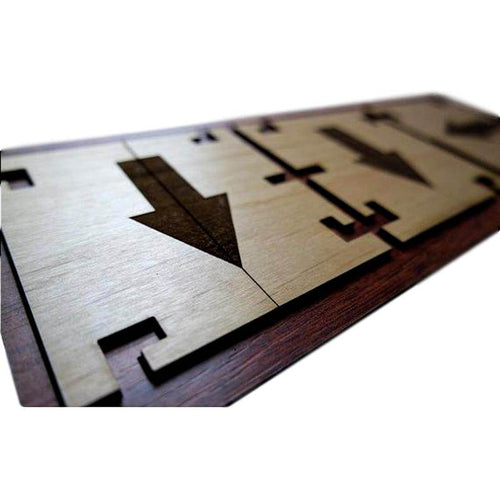Understanding Your Audience: Key to Effective Puzzle Making and Tips for Creating Engaging Puzzles:
Escape rooms have become increasingly popular over the years, with people looking for unique and exciting ways to spend their free time. As an escape room puzzle maker, your job is to create puzzles that challenge and engage players, while also providing a fun and memorable experience. In this blog, we'll explore the art of escape room puzzle making and discuss some tips and strategies for designing puzzles that will leave players wanting more.
Understanding Your Audience:
One of the most important aspects of escape room puzzle making is understanding your audience. Your puzzles should be designed to appeal to a wide range of players, from beginners to experienced puzzle enthusiasts. You should also consider the age range of your audience, as well as their interests and abilities.
For example, if your target audience is families with young children, you may want to focus on puzzles that are more visual and hands-on, with fewer complex mathematical or logic-based challenges. On the other hand, if your target audience is a group of experienced puzzle solvers, you may want to create puzzles that are more complex and require more critical thinking.
Creating Engaging Puzzles:
The key to creating engaging puzzles is to strike a balance between challenge and fun. Your puzzles should be challenging enough to keep players engaged and motivated, but not so difficult that they become frustrated and give up. Here are some tips for creating engaging puzzles:
-
Use multiple senses: Engage as many senses as possible to create a multi-layered experience. For example, use sound effects, textures, and smells to create a more immersive environment.
-
Avoid clichés: Try to avoid using puzzles that are overly familiar or clichéd, such as jigsaw puzzles or crossword puzzles. Instead, create puzzles that are unique and unexpected.
-
Be creative: Don't be afraid to think outside the box when designing puzzles. Use your imagination to create puzzles that are innovative and creative.
-
Create a theme: Create a cohesive theme for your escape room, and use that theme to guide the design of your puzzles. This will help to create a more immersive experience for players.
-
Keep it simple: Remember that players are often under time pressure when solving puzzles, so keep your puzzles as simple and straightforward as possible.
Testing and Refining:
Once you have designed your puzzles, it's important to test them thoroughly to ensure that they are effective and engaging. Ask friends or colleagues to playtest your puzzles and provide feedback on their experience. This will help you to identify any issues or areas for improvement.
You should also be willing to refine and revise your puzzles based on player feedback. Don't be afraid to make changes if a puzzle is not working as intended or if players are finding it too difficult.
Conclusion:
Designing engaging and challenging puzzles is a critical part of creating a successful escape room experience. By understanding your audience, being creative, and testing and refining your puzzles, you can create an immersive and memorable experience that players will love. Remember that the key to creating engaging puzzles is to strike a balance between challenge and fun, and to keep things as simple and straightforward as possible. With these tips and strategies, you can create puzzles that will keep players coming back for more.


0 comments